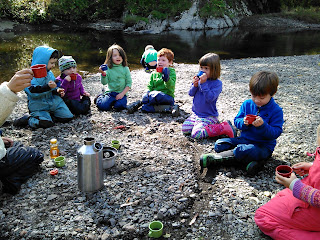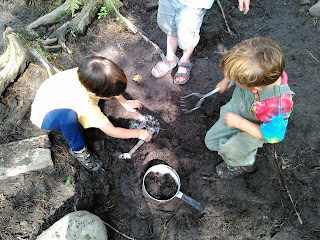Twinfield third and fourth graders are exploring the
patterns of Earth’s features by
transforming themselves into watershed wizards. Building upon pre-ECO classroom explorations
of landforms, we've ventured out into the autumn woods to investigate the lumps and bumps that form the diverse Vermont landscape. Our challenge has been to design mini-watershed models
using natural objects and shower curtains and answer the question of "Where does the water go? What does it carry with it?".
| That is NOT what we thought would happen! Look out! |
 |
| Marvelous mud! Where do you think the water that made this mud will flow as it leaves our campsite? |
Welcome is a warm shower, clean clothes, delicious soup
Welcome is the dragonfly on water
Welcome is water to our crops, thirsty trees, and dry throats
Welcome are ducks on water, fish in water, birds above water
Welcome is a day by the lake, river, or ocean
Thank you to water as it flows across our watersheds and landscapes!

















